39 F. high on Saturday in the Twin Cities.
36 F. average high on March 5.
15 F. high on March 5, 2015, after waking up to -5 F.
March 6, 1836: Unusual cold for March lasts for 12 days at Ft. Snelling. During this time, 7 nights were in the double-digits below zero.
A Confused Calendar: More April Than MarchI'm so confused. I turn on the TV and can't tell if I'm watching CNN - or
Saturday
Night Live skits. Political pundits are making weathermen look good,
which is hard to do. And the weather maps I'm staring at look nothing
like early March. We seem to have skipped a month.
Walking into the TPT Almanac studio in St. Paul
on Friday
a man approached, eyes twinkling with hope. "Is winter really over?" he
asked. I told him what I'm telling you: subzero weather is behind us
now; we may see a few more days in the 30s - a couple sloppy, slushy
snows, but yes, winter is mostly-over.
And a tame winter at that.
Perspective is important: the average high now is 36F. Today will be 20F warmer than average. 60s are possible by
Tuesday, again next weekend. Instead of Tournament Snowstorms we'll enjoy a few showers and T-storms.
NOAA SPC has southwest Minnesota in a "marginal risk" of severe T-storms late
Monday and
Tuesday. Huh?
We'll
see a few minor corrections later this month but our "St. Louis Winter"
is rapidly fading in the rear-view mirror. 31.2 inches of snow so far
at MSP.
What winter?
Marginal Severe Risk Southwestern Minnesota.
A few storms may approach or exceed severe criteria over southwestern
Minnesota Monday night into Tuesday; large hail the greatest risk. A
more significant outbreak is possible from Omaha to Oklahoma City,
Dallas and Austin. Source:
Aeris Interactive.
 3 PM Monday
3 PM Monday.
Mid-50s today; a good chance of 60 degrees Monday and Tuesday before a
slight midweek cool-down. Impressive, considering average highs are in
the mid-30s in early March. It is still early March, right? NOAA NAM
2-meter temperature: AerisWeather.
70 Degrees Next Saturday?
Both GFS and ECMWF guidance show another mild surge the end of the week
with a chance of more 60s, even an outside shot at 70F Saturday, March
12. Memories of 2012.
Low Confidence Levels.
There's a fair amount of divergence with the models by late week, NOAA
NDFD guidance showing mid-50s, but GFS predicting 70 degrees at 3 PM
Saturday. There's a good chance we'll cool off after March 15 with
highs in the 30s and 40s; closer to average. Graphic: Aeris Enterprise.
Growing Flood Potential.
A series of storms will sweep into the west coast, 1-2" for Los
Angeles, but closer to 4" for the Bay Area - putting another major dent
in a 4-year drought. Gulf moisture is forecast to surge north up the
Mississippi Valley, pushing showers and possible thunder into Minnesota
by next Sunday. NOAA's GFS model hints at 10" amounts for portions of
Louisiana and Arkansas.
Monday - Tuesday Thunder Risk; Heavier Rains Next Week? Rainfall amounts will be under .2" Monday and Tuesday, but models hint at some 1"+ amounts for the Twin Cities in 8-9 days.
Cool Correction Third Week of March, but Mild Bias Continues.
The 500 mb (18,000 foot) winds aloft are still zonal by March 19; mild
Pacific air boosting temperatures over much of the USA. No sign of
arctic fronts. Source: GrADS:COLA/IGES.
Why is 2016 Smashing Heat Records? How much is El Nino vs. background warming of the atmosphere and oceans? Here's an excerpt of a good explanation at
The Guardian: "...
The
bottom line is that the contributions of the current El Niño and wind
patterns to the very warm conditions globally over the last couple of
months are relatively small compared to the anthropogenically driven
increase in global temperature since pre-industrial times,” he added.
Steffen said the definitive assessment of this El Niño and its effect on
the world’s temperature would only be possible once the event had run
its course (it has now peaked and is expected to end
in the second quarter of this year). But he agreed that past El Niño
cycles could be an appropriate guide for the order of magnitude of the
effect..."
Map credit:
Climate Reanalyzer.
College of DuPage Professor's System May Predict Tornadoes Weeks Away.
It may be able to predict when conditions are ripe for tornadic
supercell storms, but of course not the timing or location of specific
tornadoes. I'm skeptical, but intrigued. Here's an excerpt from
WLS-TV in Chicago: "
Victor
Gensini, a meteorology professor at the College of DuPage outside
Chicago, found a link between tornado activity in the United States and
complicated atmospheric wave patterns that shift every 40 to 60 days.
The pattern is dependable enough that last year he used it to predict
overall tornado activity in the nation - and was right 10 out of 15
times. Now, Gensini has predicted higher than normal tornado activity
from Sunday through March 19. Normally, there are about 14 or 15
tornadoes a week this time of year, but the forecasters predict at least
22, and likely more..." (Image credit: abc7chicago.com).
Rising Seas Pull Fort Lauderdale, Florida's Building Boomtown, Toward a Bust. Alarmist hype? If so I have a water-front home in Ft. Lauderdale I'd like to sell you. Here's an excerpt from
InsideClimate News: "...
But
as the coastal city's skyline climbs upward, Fort Lauderdale—nicknamed
the Venice of America for its 165 miles of canals—is slowly becoming an
edifice of risk as climate change lays siege to its shores. Already,
water regularly creeps over sea walls, lapping against foundations every
few weeks. When the earth, moon and sun align to drive waters as much
as 18 inches above normal, the resulting King Tides inundate whole
streets and neighborhoods. The city is racing to put climate resiliency
measures in place, but they face a nearly impossible foe. Mayor Seiler
and his city typify the imminent risks much of South Florida faces from
global warming..."
Supreme Court Backs EPA This Time, Refuses to Block Controls on Toxic Mercury. Here's the intro to a
Washington Post story: "
A
month after it hobbled the Obama administration’s signature regulation
on climate change, the Supreme Court declined Thursday to block a
different air-pollution rule that seeks to cut toxic emissions from the
nation’s power plants. Chief Justice John G. Roberts Jr. rejected a
request to stay the Mercury and Air Toxic Standards rule, adopted by the
Environmental Protection Agency three years ago to tighten restrictions
on a class of harmful pollutants that are byproducts of burning coal..."
Photo credit above: "
The coal-fired Jim Bridger Plant outside Point of the Rocks, Wyo., in 2014." (Jim Urquhart/Reuters).
Why Nuclear Energy Can Help Fight Climate Change. Here's an excerpt of an Op-Ed from former EPA Administrator Christine Todd Whitman at Fortune: "America
is facing critical decisions as a country about how to combat climate
change, and it’s imperative that those decisions are based on solid
facts as we shape a clean energy future for the U.S. We are at a turning
point, and if we are going to effectively fight climate change, we will
need every carbon-free source of electricity we can bring to bear.
Although many misconceptions persist about the safety record of nuclear
power facilities, the truth of the matter is that 61 nuclear power
facilities in the country have been safely operating for more than 50
years. U.S. nuclear power plants have been a model of U.S. industrial
safety for more than 50 years, powering communities, keeping the air
clean and fueling state and local economies..." (File image: CNN).

Five Energy Firms Score Contracts for Twin Cities Government Solar Garden Projects. The Star Tribune reports: "Five
energy companies have won contracts to build large, community solar
projects to offset a share of the electricity used by 30 Twin Cities
public agencies and local governments, including Minneapolis. Under the
terms of the deals, released this week, a mix of national and
Minnesota-based energy companies — BHE Renewables, SolarStone Partners,
SunShare, TruNorth Solar and U.S. Solar Corp. — will finance, construct
and operate the separate solar projects, which will be built on private
land. It is the first time that government agencies in Minnesota have
joined to seek competitive bids for solar — an effort led by the
Metropolitan Council, a regional agency that is relying on solar to help
power its wastewater treatment plants and transit operations..."
Photo credit above: Innovative Solar Systems. "
The firms will build solar projects to offset some electricity used by local governments."
U.S. Agency Reaches Holy Grail of Battery Storage Sought by Elon Musk and Gates.
More breakthroughs in clean, renewable, sustainable energy? Count on
it, from industry and government research efforts. Here's a clip at The Guardian: "A
US government agency says it has attained the “holy grail” of energy –
the next-generation system of battery storage, that has has been hotly
pursued by the likes of Bill Gates and Elon Musk. Advanced Research Projects Agency-Energy (Arpa-E) – a branch of the Department of Energy
– says it achieved its breakthrough technology in seven years. Ellen
Williams, Arpa-E’s director, said: “I think we have reached some holy
grails in batteries – just in the sense of demonstrating that we can
create a totally new approach to battery technology, make it work, make
it commercially viable, and get it out there to let it do its thing...”
Photo credit: "
Dr. Ellen Williams (right), Arpa-E director: ‘We want power to be easy.’ Photograph: ARPA-E.
 Almost 100 Million Homes May Run Only on Solar by 2020
Almost 100 Million Homes May Run Only on Solar by 2020.
Bloomberg Business has the story - here's a link and excerpt: "
Almost
100 million households worldwide may be powered by solar panels by
2020, according to Bloomberg New Energy Finance. The off-grid solar
market has grown to $700 million now from non-existent less than a
decade ago, according to a report
Thursday from the London-based research company and the World Bank
Group’s Lighting Global. They expect that to swell to $3.1 billion by
the end of the decade..."
Photo credit above: "
Workers secure solar panels to a rooftop in Albuquerque, New Mexico." Photographer: Sergio Flores/Bloomberg.
iPhone 7 Rumors: Thinner with Stereo Speakers? 9to5Mac has the speculative piece; here's a clip: "...
Next,
the blog reports that the iPhone 7 will feature stereo speakers, making
it the first iPhone to do so. In the past, all iPhone models have only
featured a single mono speaker, so the addition of a second speaker
should greatly improve the device’s sound quality. Finally, in yet
another effort to keep the thickness of the device down, the iPhone 7
may feature a thinner Lightning port than previous devices..."
Thank You Netflix.
Yes, thank you for sleep deprivation and an embarrassing lack of
impulse control. If only Frank Underwood was running this year...
 TODAY
TODAY: Partly sunny, windy and milder. Winds: S 15-25. High: 56
SUNDAY NIGHT: Partly cloudy. Low: 45
MONDAY: Peeks of mild sun, nighttime thunder? Winds: S 10-20. High: 60
TUESDAY: Humid, scattered T-storms. Winds: SW 10-20. Wake-up: 51. High: 60
WEDNESDAY: Mostly cloudy, cooler breeze. Winds: NW 7-12. Wake-up: 38. High: 49
THURSDAY: Mostly cloudy skies. Winds: SE 5-10. Wake-up: 32. High: 47
FRIDAY: Partly sunny and milder. Winds: S 10-20. Wake-up: 36. High: 56
SATURDAY: Intervals of sun, April-like again. Winds: S 10-15. Wake-up: 42. High: near 60
Climate Stories....
The Mercury Doesn't Lie: We've Hit a Troubling Climate Change Milestone. Bill McKibbon has an Op-Ed at
The Boston Globe: "
Thursday,
while the nation debated the relative size of Republican genitalia,
something truly awful happened. Across the northern hemisphere, the
temperature, if only for a few hours, apparently crossed a line: it was
more than two degrees Celsius above “normal” for the first time in
recorded history and likely for the first time in the course of human
civilization. That’s important because the governments of the world have
set two degrees Celsius as the must-not-cross red line that,
theoretically, we’re doing all we can to avoid. And it’s important
because most of the hemisphere has not really had a winter. They’ve been
trucking snow into Anchorage for the start of the Iditarod; Arctic sea
ice is at record low levels for the date; in New England doctors are
already talking about the start of “allergy season...”
 The Fight to Hear Debate Questions on Climate Change in a State Struggling With Sea Level Rise.
The Fight to Hear Debate Questions on Climate Change in a State Struggling With Sea Level Rise. Here's a clip from
ThinkProgress: "...
Both
the Democratic and Republican presidential candidates will be headed to
Miami next week in advance of their next primary debates. Local
Floridians, already on the front lines of climate change as rising seas
spill into their neighborhoods, want them to talk about climate change.
Cindy Lerner is the Mayor of Pinecrest, a coastal suburb of Miami. She
and 14 other South Florida mayors sent letters to GOP candidates Marco
Rubio and Jeb Bush (before he ended his campaign) asking to meet
with them about climate change. Both candidates agreed when Lerner went
to New Hampshire to make the request in person. Bush has since dropped
out of the race, and she is still trying to schedule a meeting with
Rubio next week..." (File image: Stephen B Morton, AP).
 Scientist Joanna Haigh Warns Global Warming is a "Runaway Train"
Scientist Joanna Haigh Warns Global Warming is a "Runaway Train". Here's a snippet from an interview at
Financial Times: "...
Haigh
says global warming is like a runaway train. Unless we put the brakes
on, it will keep on rolling. People may argue about whether we’ll see 2C
or 5C of warming this century, she says. “But if you ever want the
global temperature to plateau, you’ve got to get to zero carbon
emissions.” Zero? Haigh is firm. “At some stage we’ve got to bite the
bullet.” Is that really going to happen? The 2015 UN Climate Change Conference in Paris
buoyed Haigh: 195 governments made surprisingly ambitious pledges. “I’m
a careful optimist,” she says. “I think that the wind is in the right
direction now.”
Our Hemisphere's Temperatures Just Reached a Terrifying Milestone. So says meteorologist Eric Holthaus at
Slate; here's a link and excerpt: "
Since
this post was originally published, the heat wave has continued. As of
Thursday morning, it appears that average temperatures across the
Northern Hemisphere have breached the 2 degrees Celsius above “normal”
mark for the first time in recorded history, and likely the first time since human civilization began thousands of years ago. That mark has long been held (somewhat arbitrarily) as the point above which climate change may begin to become "dangerous"
to humanity. It's now arrived—though very briefly—much more quickly
than anticipated. This is a milestone moment for our species. Climate
change deserves our greatest possible attention..."
Image credit above: "A
daily analysis of global temperatures shows that the Northern
Hemisphere likely exceeded 2 degree Celsius above "normal" levels on
March 3, 2016." Ryan Maue/Weatherbell Analytics.
Revamped Satellite Data Shows No Pause in Global Warming. Here's an excerpt from
ABC News: "
Climate
change doubters may have lost one of their key talking points: a
particular satellite temperature dataset that had seemed to show no
warming for the past 18 years. The Remote Sensing System temperature
data, promoted by many who reject mainstream climate science and
especially most recently by Sen. Ted Cruz,
now shows a slight warming of about 0.18 degrees Fahrenheit since 1998.
Ground temperature measurements, which many scientists call more
accurate, all show warming in the past 18 years. "There are people that
like to claim there was no warming; they really can't claim that
anymore," said Carl Mears, the scientist who runs the Remote Sensing
System temperature data tracking..."
Oil and Gas Industry Has Pumped Millions into Republican Campaigns. When in doubt (about the source of perpetual denial) follow the money. Here's an excerpt at
The Guardian: "
Fossil
fuel millionaires collectively pumped more than $100m into Republican
presidential contenders’ efforts last year – in an unprecedented
investment by the oil and gas industry in the party’s future. About one
in three dollars donated to Republican hopefuls from mega-rich
individuals came from people who owe their fortunes to fossil fuels –
and who stand to lose the most in the fight against climate change. The
scale of investment by fossil fuel interests in presidential Super Pacs reached about $107m last year – before any votes were cast in the Republican primary season..."
 Intense Heatwaves Could Become "Annual Events" by 2075
Intense Heatwaves Could Become "Annual Events" by 2075.
Climate Home has the analysis; here's the intro: "
Heatwaves
that used to arrive once every 20 years or so could become annual
events by 2075 across almost two-thirds of the planet’s land surface –
if humans go on burning ever more fossil fuels and releasing ever more
greenhouse gases. Claudia Tebaldi, visiting scientist at the US National Centre for Atmospheric Research, and Michael Wehner, senior staff scientist at the Lawrence Berkeley National Laboratory, report in Climatic Change journal that stringent emissions reductions could reduce the risk of such extreme heat events.
But, even so, by 2075, an estimated 18% of the Earth’s surface could
still experience those once-rare extreme heat events every year..."
Photo credit above: Frank Neulichedl/Flickr.
Climate Change is a Potent Element in the Deadly Brew of Disaster Risk. The Guardian takes a look at how a warming (more volatile) climate impacts disaster readiness: "...
Climate change is an increasingly potent element in the deadly brew of disaster risk. Already, at least 90% of disasters linked to natural hazards are climate related. Last year, thousands of people died from heatwaves in Europe and Asia, and droughts and floods – including those exacerbated by normal climate variability, such as the current strong El Niño phenomenon
– are increasing. Rising sea levels and warmer sea-surface temperatures
result in greater moisture in the air and contribute to more intense
cyclone and typhoon seasons. This was observed last year in the Indian
and Pacific Oceans: Mexico was hit by the strongest cyclone ever to make landfall, and Vanuatu and other south Pacific nations were pummelled by a category five storm..."
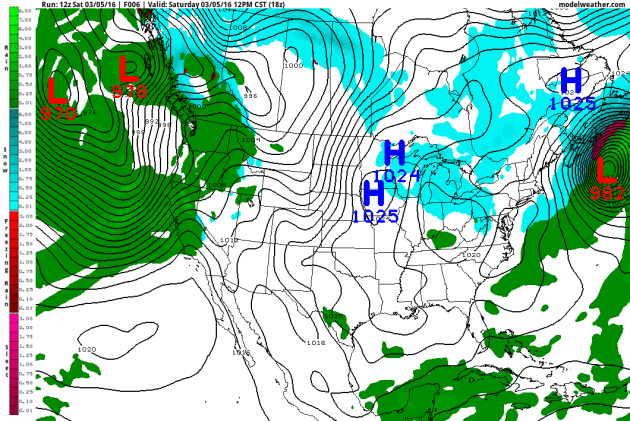
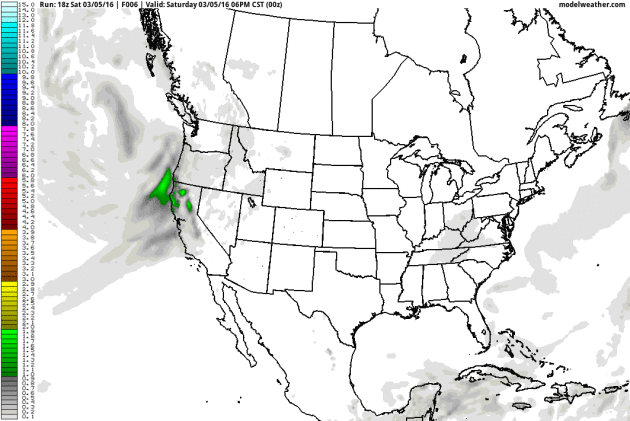
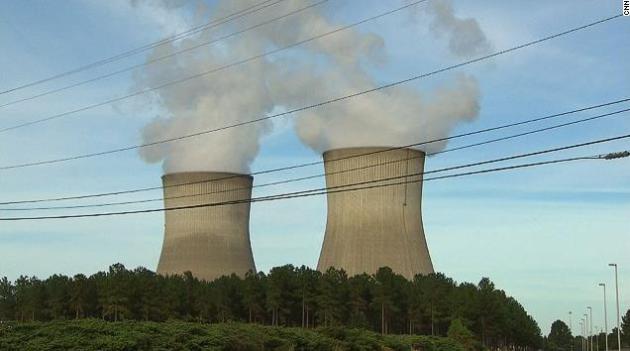
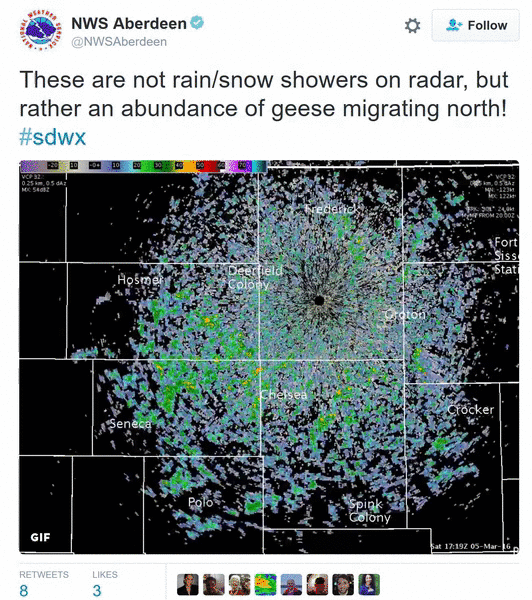
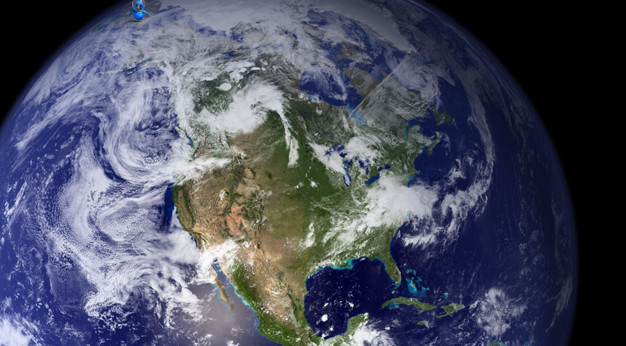
.jpg)


No comments:
Post a Comment